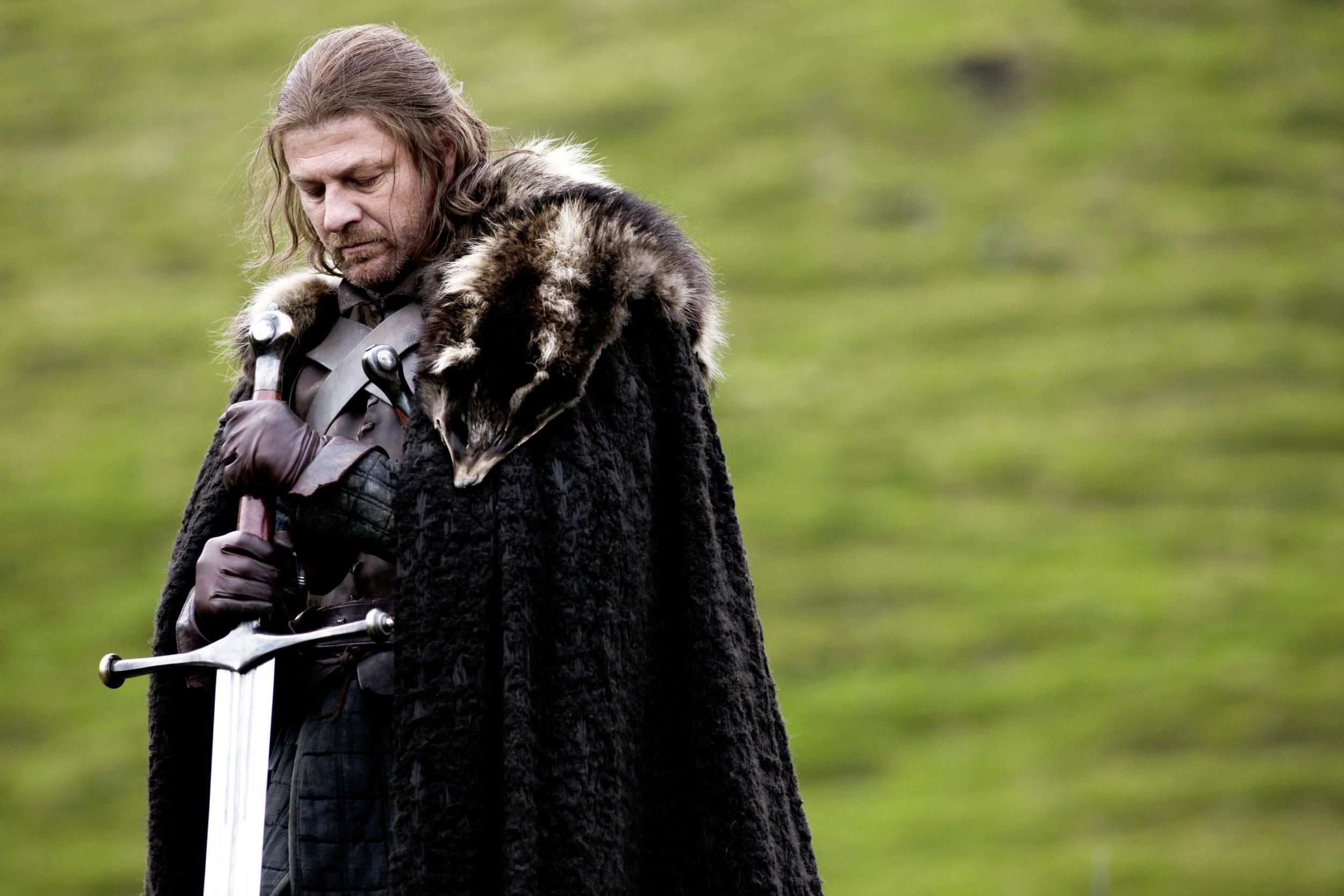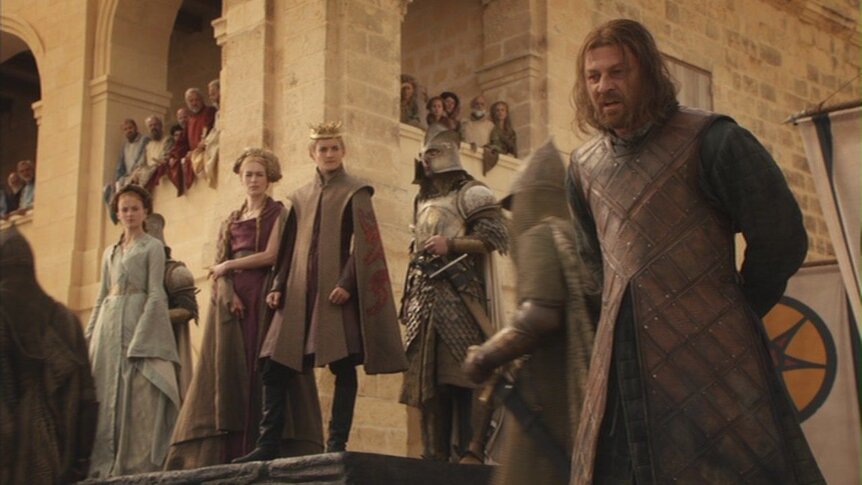Create a free profile to get unlimited access to exclusive videos, sweepstakes, and more!
The shock death of Ned Stark is still one of Game of Thrones' biggest moments

As we count down to the Game of Thrones series finale, we're looking back at the most pivotal moments of the show's first seven seasons.
As the final episodes of Game of Thrones roll out, the fandom is already going into mourning. Though there is a prequel in development, the truth is that viewers will almost certainly never see anything like this again. The series was communal viewing in a time of the great unbundling, a show that grew the audience every season it's been on the air for eight seasons running. It was no small feat, especially considering the show spanned an era of overall retraction of viewership across the TV landscape. And it’s all thanks to the show's greatest year, Season 1, and most successful adaptation moment, Ned's death.
When the first A Song of Ice & Fire novel, A Game of Thrones, arrived in 1996, it took the tropes of high fantasy and smashed them. After decades of stories in which the honorable, heroic white male patriarch survived against all the odds to win the day and become a benevolent ruler, Martin took reader expectations and used them to hide the impending surprise death of Ned Stark. It’s the critical moment in the series that hooks the reader. Bran’s tumble out the window is surprising, but the magical abilities that arise afterward were enough to seat it within an expected set of fantasy tropes. Ned’s death had no precedent. Suddenly the story was decentered, and anything could happen. Anyone could be killed.
Ned's death isn't an easy thing to pull off. Martin used the assumptions of fantasy readers to help himself along, but they weren't his only tool. The most effective is his use of the first-person perspective, telling the story through the eyes of an unreliable narrator wearing the blinders of self-righteous belief in his own inherent goodness. But readers don’t know that. Since events are only seen through his eyes and the eyes of his children, who have never questioned his teachings, the sheer scale of danger Ned's surrounded by never fully registers, and even when the edges slide into view, it’s dismissed. After all, Ned is the hero. He will be fine. Until he’s not.
By adapting the story for the small screen, showrunners Benioff and Weiss were at a disadvantage. Television does not allow for a blinder-wearing first-person perspective. The third-person perspective was an overall boon for Game of Thrones, doing great things for characters like Margaery, softening Sansa and Theon’s choices, and allowing a more nuanced characterization of Cersei Lannister earlier than one gets on the page. Unfortunately, it also revealed how dumb Ned was in those early episodes.
Without the constant reinforcement of his self-righteous interior monologue, fans could see right through him. No one thought to make “Stupid Ned Stark” memes until the story was put on screen.
And yet, by using the norms of TV casting and advertising choices, the show managed to recreate that same sense of diamond-plated plot armor around his character. Despite everything, Ned’s death was a shock for the ages.
When Game of Thrones first cast the pilot back in 2009, most of the actors and actresses in it were relative unknowns, especially in the United States. Mark Addy was best known for The Full Monty. Peter Dinklage had been on Nip/Tuck, but most knew him for the infamous rant from Living in Oblivion. In the recasting, the series added Michelle Fairey, a working actress since the 1980s, but her roles over here were in PBS staples or minor parts in Harry Potter.
Then there was Sean Bean, cast as Ned Stark. Bean wasn’t just famous, he was movie-star famous, having appeared in everything from James Bond to The Lord of the Rings. His casting was an anchor one would expect from a fantasy TV show. One could almost hear the wording an entertainment outlet like Variety would use: “HBO has greenlit Game of Thrones, a Sean Bean fantasy vehicle. ...”
The production leaned into it, hard. Bean was plastered all over the promotional key art, seated on the Iron Throne, holding a greatsword, the world on shoulders. It was his face on the side of the bus as it drove by, his face on the billboards on the side of the highway. Bean’s interviews led off the coverage in entertainment magazines and websites. It was his show.
It was the TV equivalent of A Game of Thrones using the assumptions of readers that the white male hero will survive no matter what. After all, TV is TV, and no small-screen series that just invested a massive budget into the first season gets rid of the one A-lister in the cast everyone recognizes before it is over. No one kills off the character whose face is on the side of the bus. Until they did, shocking viewers who were not used to having their assumptions used against them like that. It was so effective, even while Ned stood on that headsman’s platform, fans believed he would somehow get out of it.
It wasn’t the only time the series managed to pull off a death so shocking. The production managed to succeed in fooling viewers with the Red Wedding, and even to a decent extent with Jon Snow’s death in Season 5. But that first one, when so many had not read the books, and so few understood what was coming, was the moment when the show really nailed what it was like to read Martin’s series.
Game of Thrones won't be the only adaptation of A Song of Ice and Fire. In this era of reboots and remakes, we will be lucky if the series is off the air for a full decade before someone revisits it. But, with the show as big as it is, and the story as widely known now, no one will ever be able to pull off that type of shock for Ned's death ever again.



























